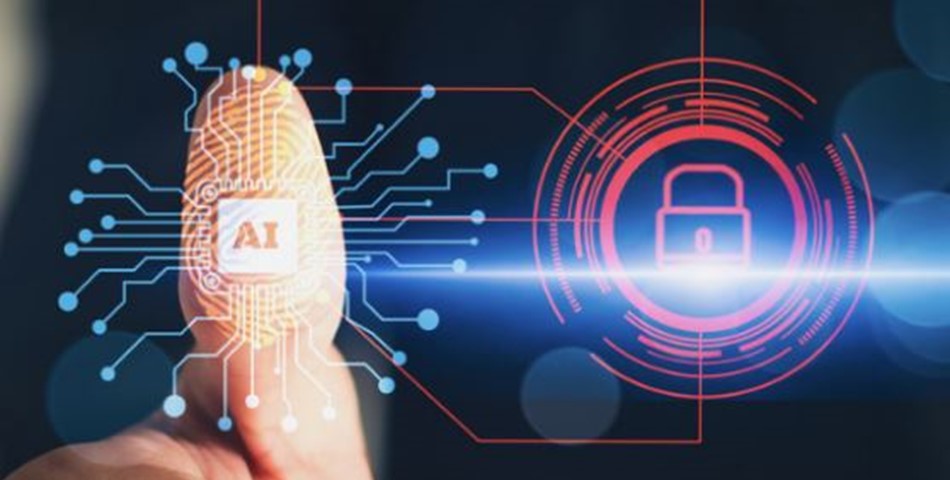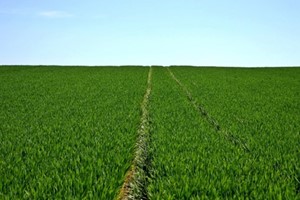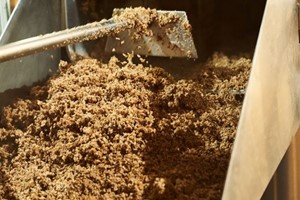Artificial intelligence (AI) is revolutionizing the food processing industry. From sorting to safety and compliance to ensuring employees’ personal hygiene procedures, it’s becoming such an important aspect of the industry that it’s expected to have a compound annual growth rate of 45% between now and 2026.
The most prominent component of the food processing industry being overhauled by AI is the sorting of food and products. Formerly a very rigorous process requiring large amounts of human labor, the sorting process is now managed primarily by machines that use technologies such as cameras and X-rays alongside algorithms to analyze different aspects of food and identify any deficiencies.
Likewise, AI can improve food safety. Food processors use optical fluorescent imaging and ultrasonic sensing technology to recognize food residue on equipment, which can contaminate an entire product line. AI technology can also ensure workers have personal protective equipment, do temperature checks and grade food cleanliness, similar to quality grading.
But that does not mean AI in food processing is without risk — both operational and financial — as demonstrated by recent shutdowns and supply chain disruptions.
The risks of AI
Like any business dependent on data and technology, food processing operations dependent on AI are vulnerable to ransomware attacks. However, instead of just data at risk, AI-powered facilities could be completely shut down if a cybercriminal infiltrates the system that controls equipment.
Take JBS, the world’s largest meat processor, for example. The Brazilian company experienced a headline-worthy ransomware attack in May, which shut down most of the company’s U.S. operations as well as some operations in Canada and Australia. The two-day event wiped out nearly a fifth of the nation’s beef, pork and poultry production, and the company paid $11 million in ransom to the hackers.
These attacks could also have an impact on consumer safety, causing major issues to both sanitation and traceability (possible pathogen contamination and recalls, for example) within the plants.
Cybersecurity firm Recorded Future reported 40 similar cyberattacks on food and beverage companies in 2020.
The food industry is still catching up to the big tech or financial companies who have already dedicated the resources to robust cyber defenses. However, the recent attacks on large manufacturers such as JBS have many companies looking to strengthen their cyber defenses and minimize their vulnerabilities.
Business shutdowns are not always caused by external players. While technology can increase efficiency and consistency, it can also malfunction and cause massive disruption to operations. For example, Nestlé Waters North America (now called BlueTriton) temporarily shut down plant operations after a driverless forklift caught fire while recharging (according to a lawsuit filed against the manufacturer of the forklifts). The company subsequently grounded all 51 vehicles across their plants.
Getting the most out of AI while reducing risk
Reducing risk while maximizing the benefits of AI in food processing starts with organizational resilience, evaluating both internal and external threats to operations and preparing an operational plan that establishes both protections and backups in case of breach or equipment failure.
A key player here is your organization’s IT department, which needs to be in alignment with operations in the use of AI — knowing how AI is used and assessing the risk of a data breach or the potential for equipment hacking or AI equipment malfunction.
Reducing AI business risk also means offloading it to insurance. While AI has the potential to reduce coverage costs because it can be used to conduct predictive maintenance and determine when equipment needs servicing, determining the right coverage is essential. Product liability, general liability, property and other coverages may cover AI, but not in all cases.
In some cases, underwriters may ask to access a food processor’s refrigeration temperature sensors to confirm the equipment’s viability in real time. This type of information access raises underwriters’ comfort levels with risk. Working with a broker knowledgeable in both agribusinesses and AI will help you appropriately assesses your business’ risk.
Ken Kessier














